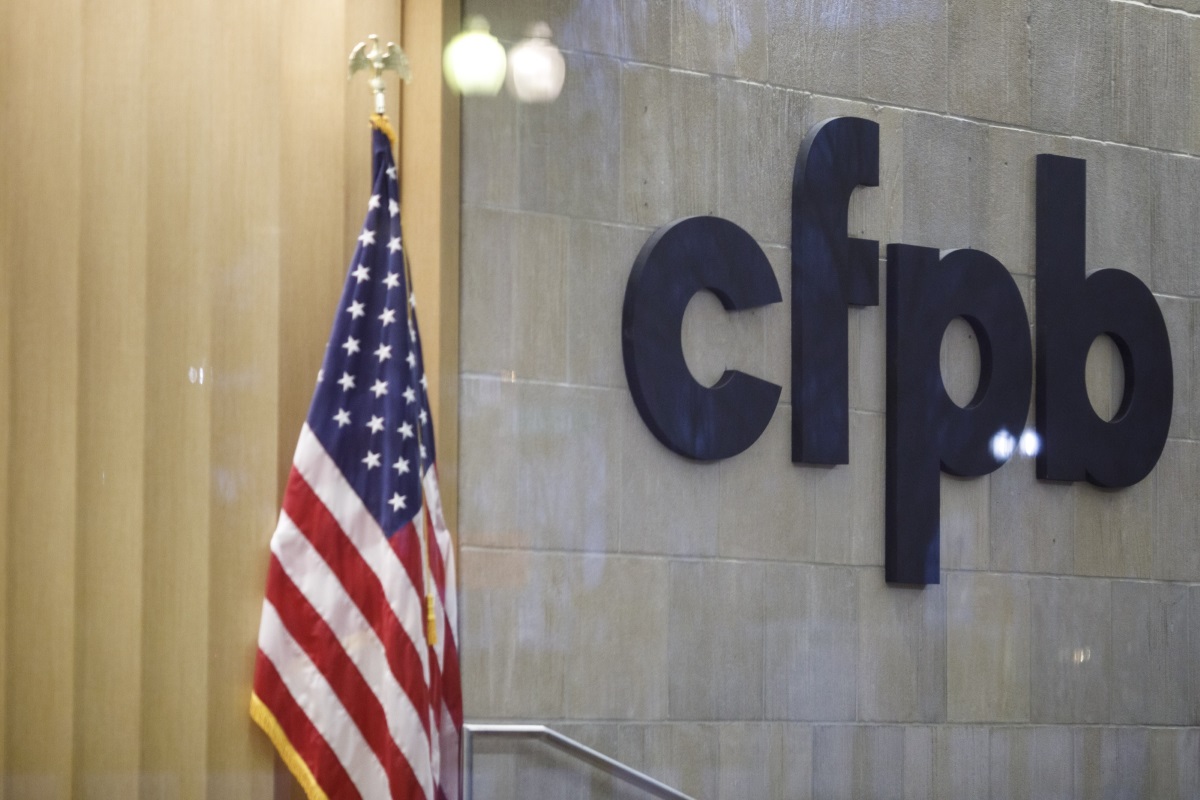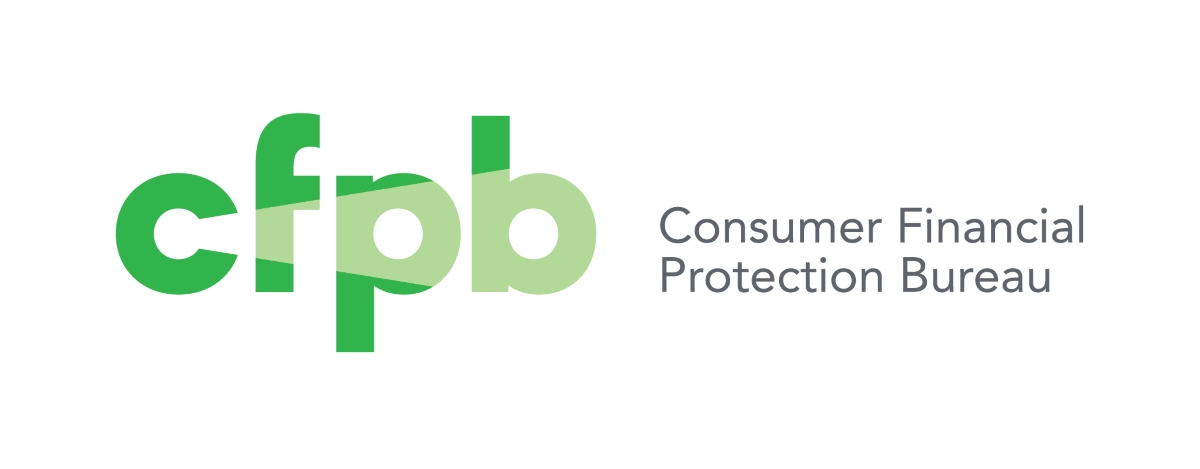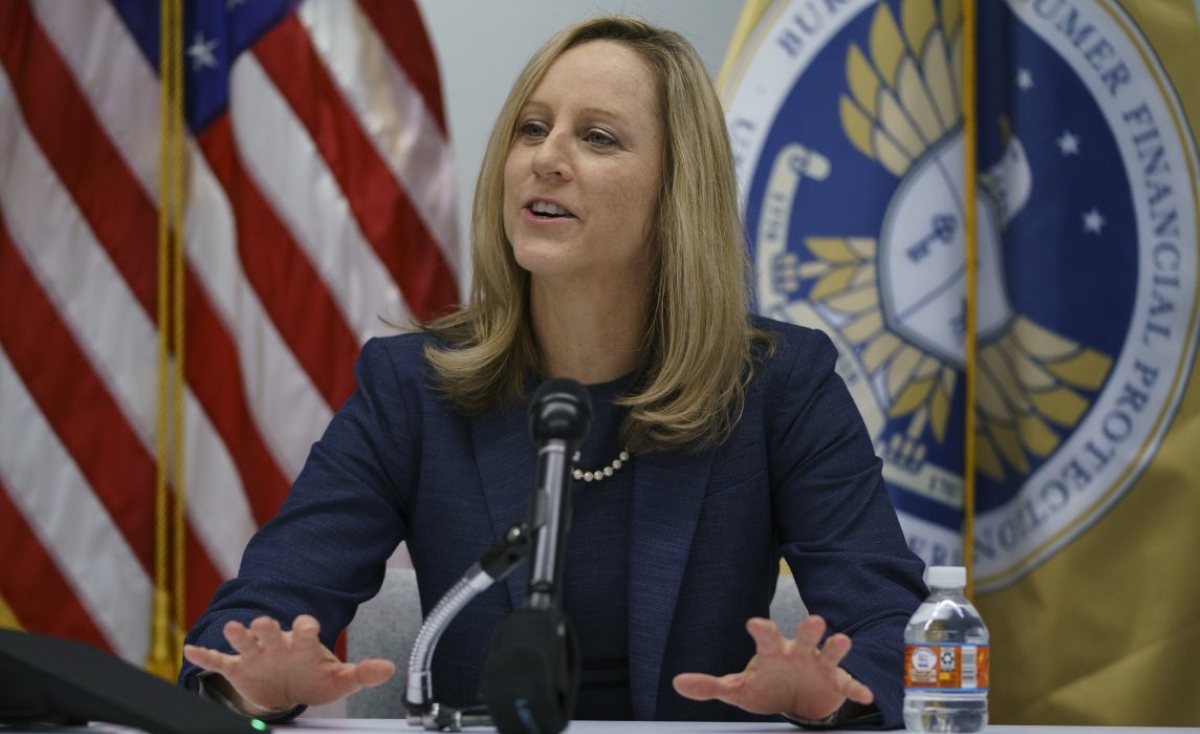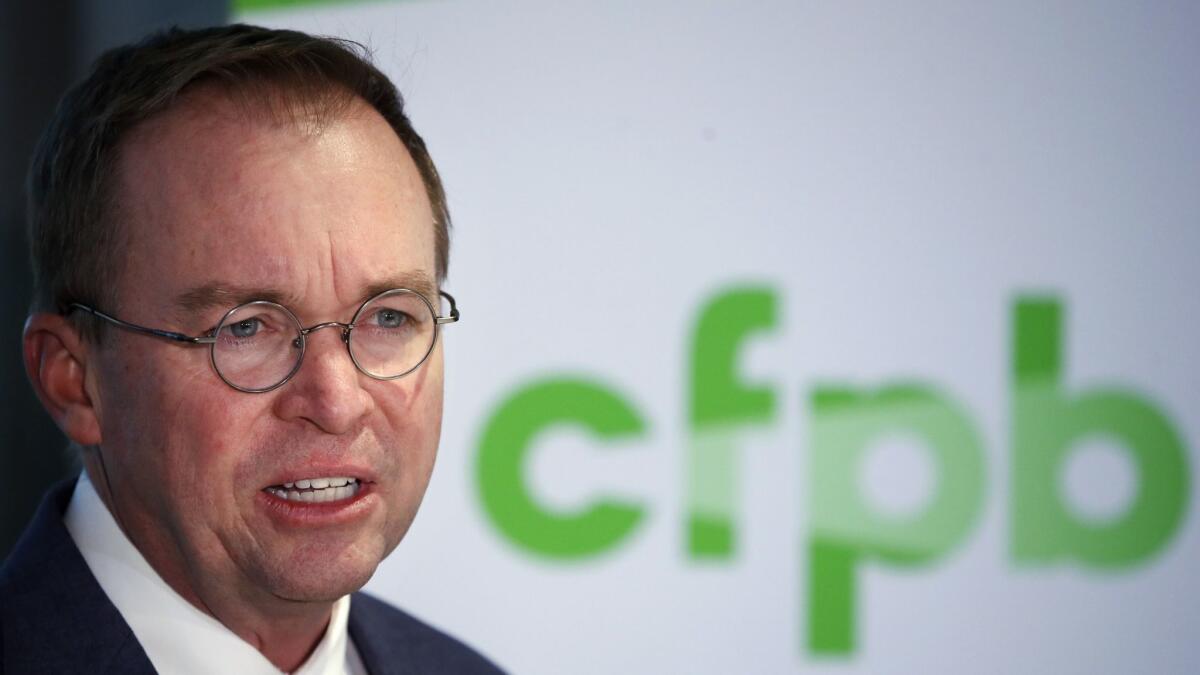Home>Finance>What Is The Function Of The Consumer Financial Protection Bureau


Finance
What Is The Function Of The Consumer Financial Protection Bureau
Modified: March 1, 2024
Discover the role and importance of the Consumer Financial Protection Bureau in safeguarding consumer interests in the world of finance.
(Many of the links in this article redirect to a specific reviewed product. Your purchase of these products through affiliate links helps to generate commission for LiveWell, at no extra cost. Learn more)
Table of Contents
- Introduction
- History of the Consumer Financial Protection Bureau
- Role and Authority of the Consumer Financial Protection Bureau
- Consumer Protection and Financial Regulation
- Consumer Complaint Database
- Supervision and Enforcement
- Successes and Controversies of the Consumer Financial Protection Bureau
- Future of the Consumer Financial Protection Bureau
- Conclusion
Introduction
The Consumer Financial Protection Bureau (CFPB) is an independent agency established in 2010 under the Dodd-Frank Wall Street Reform and Consumer Protection Act. Its primary mission is to protect consumers in the financial marketplace by enforcing consumer financial laws and regulations, promoting fair competition, and ensuring consumer access to fair and transparent financial products and services.
The CFPB plays a vital role in safeguarding consumers’ interests and ensuring the stability and integrity of the financial system. By providing oversight and regulation of financial institutions, the CFPB helps prevent predatory practices, discriminatory lending, and other harmful behaviors that can harm consumers and the economy.
With its broad regulatory authority and enforcement powers, the CFPB works towards achieving a fair and transparent financial marketplace where consumers are empowered to make informed decisions and can trust that they are protected from unfair, deceptive, or abusive practices.
In this article, we will explore the history, role, and function of the Consumer Financial Protection Bureau. We will also delve into its consumer protection initiatives, enforcement actions, successes, and controversies. Finally, we’ll discuss the future of the CFPB and its importance in a rapidly evolving financial landscape.
History of the Consumer Financial Protection Bureau
The idea for the Consumer Financial Protection Bureau (CFPB) emerged in the wake of the 2008 financial crisis, which exposed widespread predatory lending practices, deceptive marketing tactics, and other misconduct in the financial industry. In response to the crisis, Congress passed the Dodd-Frank Wall Street Reform and Consumer Protection Act in 2010, which created the CFPB as an independent agency.
The CFPB was envisioned as a single, dedicated agency focused solely on consumer financial protection. Previously, consumer protection responsibilities were split among multiple agencies, leading to fragmented oversight and regulatory gaps.
Elizabeth Warren, then a professor at Harvard Law School and an expert on bankruptcy and consumer protection, conceived the idea for the CFPB. She advocated for a stronger regulatory framework and a dedicated agency to protect consumers in the financial marketplace.
President Barack Obama appointed Richard Cordray as the first Director of the CFPB in 2011, following a contentious confirmation process. Under Cordray’s leadership, the CFPB established its structure, expanded its staff, and developed its regulatory and enforcement capabilities.
Since its inception, the CFPB has taken on a proactive role in consumer protection. It has implemented regulations, issued guidance, and enforced compliance with federal consumer financial laws. The agency has been particularly focused on addressing issues such as predatory lending, debt collection practices, credit reporting, mortgage servicing, and payday lending.
Despite facing some opposition and legal challenges, the CFPB has made significant contributions to consumer financial protection. It has returned billions of dollars to consumers through enforcement actions and has worked to level the playing field for consumers who have historically been disadvantaged in the financial marketplace.
It is important to note that the CFPB’s history has not been without controversy. Critics argue that the agency wields too much power and that its regulations can stifle financial innovation and restrict access to credit. However, supporters maintain that the CFPB is essential for protecting consumers and ensuring fair and transparent financial markets.
Overall, the CFPB’s history reflects a commitment to consumer financial protection and a recognition of the need for a dedicated agency focused on safeguarding consumers’ interests in the financial marketplace.
Role and Authority of the Consumer Financial Protection Bureau
The Consumer Financial Protection Bureau (CFPB) has been entrusted with significant authority and responsibilities to protect consumers and ensure a fair financial marketplace. Its role encompasses various key functions:
- Rulemaking and Guidance: The CFPB has the authority to develop and enforce regulations that promote fair and transparent consumer financial products and services. It issues rules and guidance to establish standards for financial institutions, such as mortgage lenders, credit card companies, and debt collectors, to prevent abusive practices.
- Consumer Education and Empowerment: The CFPB facilitates consumer education initiatives to promote financial literacy and empower individuals to make informed financial decisions. Through its website, publications, and educational programs, the agency provides resources and tools to help consumers understand their rights, navigate the financial system, and avoid common pitfalls.
- Consumer Complaint Database: The CFPB operates a comprehensive consumer complaint database, allowing individuals to submit complaints against financial institutions. This database serves as a valuable resource to monitor industry practices, identify emerging issues, and take appropriate enforcement actions. It also provides consumers with the ability to research and compare complaints against specific financial institutions.
- Supervision and Enforcement: The CFPB has supervisory authority over large banks, credit unions, and other financial institutions to ensure compliance with federal consumer financial protection laws. It conducts examinations, audits, and risk assessments to identify violations and takes enforcement actions against entities engaged in unfair, deceptive, or abusive practices.
- Coordination and Collaboration: The CFPB collaborates with state and federal agencies, including the Department of Justice, the Federal Trade Commission, and state attorneys general, to enhance consumer protection efforts. It shares information, coordinates investigations, and collaborates on enforcement actions to maximize the impact of its regulatory and enforcement activities.
The authority granted to the CFPB enables it to enforce a broad range of consumer financial protection laws, including the Truth in Lending Act, Fair Credit Reporting Act, and the Dodd-Frank Act. The agency has a mandate to prevent unfair, deceptive, and abusive practices, promote transparency and competition, and ensure equal access to credit and financial services.
By exercising its authority, the CFPB works towards fostering a fair and transparent financial marketplace that serves the best interests of consumers. It helps individuals navigate complex financial transactions, holds financial companies accountable for their actions, and strives to protect vulnerable consumers from unfair or predatory practices.
Consumer Protection and Financial Regulation
Consumer protection and financial regulation are closely intertwined, and the Consumer Financial Protection Bureau (CFPB) plays a pivotal role in ensuring that consumers are safeguarded in their financial transactions. The CFPB’s activities in this realm are vital for maintaining the integrity and stability of the financial system. Here are the key aspects of consumer protection and financial regulation:
- Preventing Predatory Practices: Financial regulations are designed to prevent predatory practices that can harm consumers. The CFPB has enacted rules and regulations to combat predatory lending practices, such as those associated with payday loans, auto loans, and mortgages. These regulations aim to ensure that financial institutions provide fair, transparent, and affordable credit options to consumers.
- Ensuring Fair Credit Reporting: The CFPB oversees the fair and accurate reporting of consumer credit information by credit reporting agencies. It enforces provisions of the Fair Credit Reporting Act, requiring agencies to maintain accurate records and promptly investigate and correct any errors in consumers’ credit reports. This helps individuals access credit on fair terms and protects them from inaccurate or misleading credit reporting.
- Preventing Discrimination: Financial regulations prohibit discriminatory lending practices that may disproportionately affect certain individuals or communities. The CFPB enforces anti-discrimination laws, such as the Equal Credit Opportunity Act, to ensure that consumers are not denied credit or charged higher interest rates based on factors like race, religion, gender, or national origin.
- Encouraging Transparency and Disclosure: Transparency is vital to protect consumers from misleading or deceptive financial practices. The CFPB promotes transparency and requires financial institutions to provide clear and understandable information about the terms, fees, and risks associated with financial products. This empowers consumers to make informed decisions and avoid hidden costs or unfair terms.
- Addressing Consumer Complaints: The CFPB operates a consumer complaint database where individuals can report complaints about financial institutions. This data helps identify patterns of misconduct, resolve individual complaints, and initiate investigations or enforcement actions against institutions engaged in unfair or deceptive practices. The consumer complaint database serves as a valuable tool for monitoring industry practices and promoting accountability.
By enforcing these regulations and protecting consumers’ rights, the CFPB aims to mitigate the risks and vulnerabilities that consumers may face in their interactions with financial institutions. Through supervision, enforcement, and education, the CFPB contributes to a fair and competitive financial marketplace that promotes trust, transparency, and equitable access to financial services for all consumers.
Consumer Complaint Database
The Consumer Financial Protection Bureau (CFPB) operates a comprehensive Consumer Complaint Database, which serves as a valuable resource for consumers, industry stakeholders, and regulators. The database allows consumers to lodge complaints against financial institutions and provides transparency in tracking industry practices and addressing consumer grievances. Here are the key aspects of the CFPB’s Consumer Complaint Database:
Function and Accessibility: The Consumer Complaint Database is an online platform where consumers can submit complaints about various financial products and services, such as mortgages, credit cards, student loans, and debt collection. The database is accessible to the public through the CFPB’s website, offering a user-friendly platform for consumers to voice their concerns and seek redress.
Types of Complaints: The database accepts complaints related to a wide range of consumer financial issues, including but not limited to unauthorized transactions, billing disputes, credit reporting errors, debt collection harassment, and mortgage servicing problems. By capturing complaints across different financial sectors, the database provides insights into recurring issues and industry-wide trends.
Transparency and Accountability: The Consumer Complaint Database promotes transparency by allowing consumers to share their experiences and provide feedback on financial institutions. Each complaint submitted undergoes a thorough review process to confirm its validity and relevance. Verified complaints are then published, including details of the issue, the financial institution involved, and the action taken by the company to address the complaint.
Consumer Empowerment: The database empowers consumers by providing them with information about the experiences of fellow consumers. By researching the database, individuals can gain insights into how financial institutions handle complaints and find answers to their own concerns. It also offers a platform for consumers to warn others about unfair or deceptive practices and helps them make informed decisions about choosing financial products or services.
Industry Oversight and Enforcement: The Consumer Complaint Database serves as a valuable tool for the CFPB in monitoring industry practices and identifying potential regulatory violations. By analyzing patterns and trends in the complaints received, the CFPB can uncover systemic issues and initiate targeted enforcement actions against companies engaged in unfair or deceptive practices. The database also helps prioritize investigations and regulatory actions based on the severity and impact of consumer complaints.
Continuous Improvement: The CFPB uses the information gathered from consumer complaints to inform regulatory policy and improve industry practices. By analyzing and aggregating complaint data, the CFPB can identify areas where consumer protection regulations may need strengthening or where industry practices need improvement. This iterative feedback process helps refine financial regulations, promotes fairer practices in the marketplace, and strengthens consumer protection overall.
Overall, the Consumer Complaint Database is a vital resource that empowers consumers and promotes accountability in the financial industry. It allows individuals to voice their concerns, fosters transparency in the marketplace, and helps the CFPB in its mission to protect consumers and ensure fair and transparent financial practices.
Supervision and Enforcement
The Consumer Financial Protection Bureau (CFPB) plays a critical role in supervising and enforcing consumer financial protection laws to ensure compliance by financial institutions. Through its supervision and enforcement activities, the CFPB promotes fair and transparent practices, holds institutions accountable for their actions, and protects consumers from abusive or deceptive practices. Here is an overview of the CFPB’s supervision and enforcement functions:
Supervision: The CFPB has the authority to supervise and examine large banks, credit unions, mortgage lenders, payday lenders, and other financial institutions to ensure compliance with federal consumer financial protection laws. Through this supervisory function, the CFPB assesses an institution’s compliance management systems, internal controls, and consumer interactions. It conducts examinations, audits, and risk assessments, and provides guidance on best practices to improve compliance and consumer protection.
Enforcement: The CFPB has the power to enforce consumer financial laws and take action against institutions engaged in unfair, deceptive, or abusive practices. It can initiate investigations, issue subpoenas, and seek legal remedies to address violations. The CFPB may pursue enforcement actions, including civil lawsuits and administrative proceedings, to obtain consumer redress, restitution, and imposition of penalties. It can also enter into settlements with financial institutions to rectify violations and prevent future misconduct.
Partnerships with Agencies: The CFPB collaborates with other regulatory agencies, such as the Department of Justice, the Federal Trade Commission, and state attorneys general, to enhance supervision and enforcement efforts. These partnerships allow for the sharing of information, coordination of investigations, and joint enforcement actions. By leveraging collective resources and expertise, these collaborations amplify the impact of consumer protection efforts and promote consistency in enforcement actions.
Evaluation and Compliance: The CFPB focuses on evaluating financial institutions’ compliance with key consumer protection laws, such as the Truth in Lending Act, the Fair Credit Reporting Act, and the Equal Credit Opportunity Act. It assesses compliance with disclosure requirements, fair lending practices, debt collection practices, and other consumer-focused regulations. By ensuring compliance, the CFPB aims to protect consumers’ rights, prevent discriminatory practices, and promote transparency in the marketplace.
Consumer Remediation: In cases where consumers have suffered harm, the CFPB works to secure redress and restitution. Under enforcement actions, the CFPB may require financial institutions to provide relief to affected consumers in the form of compensation, debt forgiveness, or other forms of restitution. This helps rectify the harm caused by non-compliant or predatory practices, ensuring that consumers are fairly compensated for their losses.
Compliance Assistance: The CFPB also provides guidance and assistance to financial institutions to facilitate compliance with consumer financial protection laws. Through publications, advisory opinions, and regulatory guidance, the CFPB helps institutions understand and implement best practices. By offering compliance assistance, the CFPB strives to foster a culture of responsible and ethical conduct within the financial industry and promote a fair and transparent marketplace for consumers.
By combining supervision, enforcement, and partnership efforts, the CFPB aims to create a robust framework for consumer protection in the financial sector. Through its vigilance and regulatory oversight, the CFPB helps to prevent consumer harm, hold institutions accountable for their actions, and ensure fairness and transparency in the marketplace.
Successes and Controversies of the Consumer Financial Protection Bureau
The Consumer Financial Protection Bureau (CFPB) has had notable successes in its efforts to protect consumers and promote fair practices in the financial marketplace. However, it has also faced critics and controversies. Let’s explore some of the key successes and controversies surrounding the CFPB:
Successes:
- The CFPB has returned billions of dollars to consumers through enforcement actions, restitution settlements, and relief programs. This has provided financial redress to individuals who were harmed by unfair or deceptive practices.
- The CFPB has taken action against predatory lenders, addressing issues such as abusive payday lending practices and unscrupulous mortgage servicing. These efforts have helped protect vulnerable consumers from falling into debt traps and experiencing foreclosure.
- Through its consumer education initiatives, the CFPB has empowered individuals by providing resources and tools to make informed financial decisions. This has contributed to increased financial literacy and improved consumer decision-making.
- The establishment of the Consumer Complaint Database has provided a transparent platform for consumers to lodge complaints and share their experiences with financial products and services. This has led to increased accountability and encouraged financial institutions to address consumer concerns.
- The CFPB has worked towards creating more transparent and fair lending practices. It has introduced regulations to combat discriminatory lending practices and promote access to credit for underserved communities.
Controversies:
- Some critics argue that the CFPB possesses too much regulatory power and lacks accountability due to its independent structure. They claim that it can stifle financial innovation and limit access to credit.
- The CFPB has faced legal challenges regarding the constitutionality of its structure and the authority of its director. These legal battles have raised questions about the agency’s legitimacy and the extent of its powers.
- There have been concerns about potential regulatory overreach and excessive burdens imposed on financial institutions. Critics argue that regulatory compliance costs can be passed on to consumers and may restrict market competition.
- Political controversies have surrounded the leadership and funding of the CFPB. Ongoing debates about its structure and appropriate jurisdiction have led to divisions among lawmakers and industry stakeholders.
- Some critics have raised concerns about the potential for mission drift, suggesting that the CFPB may be more focused on regulatory enforcement rather than consumer education and empowerment.
Despite these controversies, the successes of the CFPB cannot be denied. It has had a significant impact in protecting consumers, holding financial institutions accountable, and promoting fair practices in the financial marketplace. The agency continues to evolve and face challenges as it strives to strike the right balance between consumer protection and industry regulation.
Future of the Consumer Financial Protection Bureau
The Consumer Financial Protection Bureau (CFPB) faces an evolving landscape and various challenges as it positions itself for the future. Here are some key factors that will shape the future of the CFPB:
Leadership and Policy Direction: The CFPB’s future will depend on its leadership and the policy direction set by the administration in power. Changes in leadership can bring different priorities and approaches to consumer financial protection. The agency’s future actions and initiatives will be influenced by the political climate and the priorities of policymakers.
Technology and Innovation: As technology continues to transform the financial industry, the CFPB will need to adapt and keep pace with emerging innovations. This includes monitoring and regulating fintech companies, ensuring consumer protection in digital financial services, and addressing potential risks related to data privacy and cybersecurity.
Consumer Empowerment and Education: The CFPB will likely continue to focus on empowering and educating consumers to make informed financial decisions. This may involve expanding its efforts to enhance financial literacy, providing better access to consumer resources and tools, and addressing emerging challenges in the financial marketplace.
Fair Lending and Equal Access to Credit: The CFPB will play a crucial role in promoting fair lending practices and ensuring equal access to credit for individuals and communities. It will likely continue to monitor and address discriminatory practices, encourage responsible lending, and promote financial inclusion for underserved populations.
Regulatory Innovation: The CFPB may explore new regulatory approaches and tools to keep pace with the evolving financial landscape. This could involve embracing more flexible regulatory frameworks, engaging in regulatory sandboxes to foster innovation while protecting consumers, and adopting data-driven approaches to enhance regulatory oversight.
Collaboration with Stakeholders: Building and strengthening partnerships with industry stakeholders, other regulatory agencies, and consumer advocacy groups will remain essential for the CFPB. Collaborative efforts can enhance the effectiveness of consumer protection, enable shared knowledge and insights, and foster industry-wide compliance with consumer financial protection laws.
Evolving Legal and Regulatory Landscape: The CFPB’s future will be influenced by changes in laws, regulations, and court rulings. Ongoing legal battles surrounding the agency’s structure may impact its authority. Additionally, changes in financial regulations and policies enacted by Congress may require the CFPB to adapt its strategies and approaches accordingly.
As the CFPB faces the future, its focus will likely remain on protecting consumers, promoting fair practices, and ensuring a transparent financial marketplace. By leveraging its regulatory authority, collaborating with stakeholders, and embracing innovation, the CFPB can continue to evolve and adapt to the changing needs and challenges of consumer financial protection in the years to come.
Conclusion
The Consumer Financial Protection Bureau (CFPB) plays a critical role in protecting consumers in the financial marketplace. Since its establishment, the CFPB has made significant strides in enforcing consumer financial laws, promoting fair competition, and ensuring transparent and equitable access to financial products and services.
Through its rulemaking, supervision, and enforcement activities, the CFPB has taken action against predatory practices, addressed discriminatory lending, and provided financial redress to consumers who have been harmed by unfair practices. The establishment of the Consumer Complaint Database has empowered consumers to voice their concerns, while also serving as a valuable tool for monitoring industry practices and facilitating enforcement actions.
While the CFPB has faced some controversies and legal challenges, its successes in protecting consumers cannot be overlooked. The agency’s future will depend on its leadership, regulatory approach, and ability to adapt to technological advancements and emerging industry trends. Continued collaboration with industry stakeholders, consumer education initiatives, and an emphasis on fair lending and equal access to credit will be key in the years ahead.
As the financial landscape evolves, the CFPB’s role in consumer financial protection remains vital. It is crucial for the agency to strike a balance between strong enforcement and responsible regulation to ensure fair and transparent practices while also fostering financial innovation and access to credit. The future of the CFPB hinges on its ability to navigate these challenges and continue to protect consumers while promoting a thriving and competitive financial marketplace.
In conclusion, the Consumer Financial Protection Bureau plays a crucial role in creating a level playing field for consumers in the complex and ever-changing financial landscape. Through its regulatory authority, enforcement actions, consumer education efforts, and the Consumer Complaint Database, the CFPB aims to empower individuals, hold financial institutions accountable, and ensure that consumers have access to fair and transparent financial products and services.














